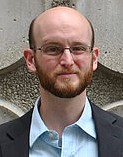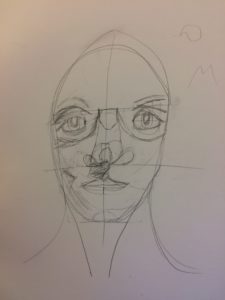
A small yarn turtle, a work by a student from Western Middle School for the Arts, stares intensely at me as speakers tell us stories, answer questions and impart on us wisdom on both board involvement and board creation. Half of the audience made up of our 2018 NEXT class are playing with disembodied thumbs, as the other tries to find places to squirrel away large, rubber banded portraits, fearful of exposing the drawings to unprepared eyes.
The Schneider Hall gallery on the University of Louisville (UofL) campus that houses the turtle, and our class, is covered from floor to ceiling in art work as part of the 2018 Scholastic Art Awards Silver Key and Honorable Mention Exhibition. Selected from nearly 2,300 students in Louisville and the surrounding counties, the work displays incredible art work created from the gamut of visual art mediums. It is a powerful portrayal of the importance of art to our children and a reminder of how much creative passion exists (and needs fostering) in our local area students.
After a brief introduction to the Hite Art Institute at UofL by Scott Massey, Director, Hite Art Institute & Chair, Department of Fine Art and Dr. Kimberly Kempf-Leonard, Dean of College of Arts and Sciences, our group of NeXt Ambassadors are split into two groups. The group I am not in goes off with Professor Mary Carothers, to create alginate molds and plaster copies of their thumbs, while my group is led into a drawing studio by Professor James Grubola under the impression we will be learning to draw from a still life. Grubola, whose work had most recently been on display in the Schneider Hall gallery and at the Cressman Center, had decided that an apple was too dull a subject for our group, so we entered the studio to find three life models waiting with some skulls to help us draw the human head. As an assurance, he tells us that “if you can write your name legibly, you can draw” but for me, as I clutch the graphite stick in my hands, I just begin questions how legible my written name truly is.

Regardless of our skill at drawing (see exhibit A), the lesson is an important one. We do not start attempting to draw what we see, instead we look behind the minutiae to the large forms that serve as the head’s foundation. We draw a circle, break that circle into thirds and begin creating lines and circles, focusing on the biggest shapes first as we slowly move toward adding details. We started with the structure underneath and work our way inside out.
The rest of the afternoon, we are reunited with our four-thumbed friends to experience three speakers. The final speaker, Liam Felsen, an attorney at Frost Brown Todd and NeXt Gen Board Member, shares his own board involvement stories, including his work on the board of Kentucky Shakespeare.
The first, Dr. Erica Sutton, is the Assistant Dean of Medical Education/Clinical Skills and Assistant Professor of Surgery at the University of Louisville and a board member for the Fund for the Arts. She does not hesitate to begin sharing with us the importance of art in her life, as she describes science as an art and creativity in her field as to what leads to innovation. She discussed the possible attributes of art as help with pain management and her own personal attempts to push her colleagues to embrace the arts both personally and in their professions. Dr. Sutton reminds us to not take artist for granted and that often we expect art to be free, which ultimately just allows the community to de-value art. As board development is our topic today, she makes sure to impart the wisdom that a “a diverse board” leads to “diverse thought”.
In between our discussions with the board members, we are treated to the Christen Boone, President and CEO of Fund for the Arts (and full confession my first boss out of college many years ago), cliff notes on the “Ten Basic Responsibilities of Nonprofit Boards” by Richard Ingram, that Christen even further simplified to three main points: Help guide the organization in fulfillment of its mission; Provide financial stewardship; and select, evaluate and support the CEO. In other words, help make sure the organization is doing what its supposed to be doing and that it has the means and the leadership to accomplish that mission.
The afternoon ended with an introduction to the creative writing program and readings of poetry and a look at the puppets being created for the theatre department’s spring production of Paula Vogel’s “The Long Christmas Ride Home”. The stylized and structured forms of the puppets were a final reminder of the underlying theme for the day – a strong foundation and structure is necessary for any organization’s and the board members help create that foundation and structure to allow the organizations to create their art and fulfill their missions.
